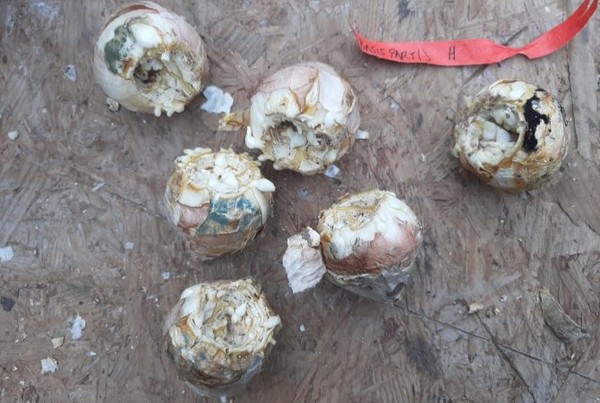Aspergillus and Penicillium are two dreaded fungi in hyacinth cultivation. They cause a black or blue-green patch on the bulb, respectively, and can also cause a loss of quality. The Business Unit Greenhouse Horticulture and Flower Bulbs of Wageningen University & Research is investigating whether biological control products are suitable for combating both fungi.
After harvesting, bulbs are stored for sale or for propagation. It happens more and more often that these bulbs become infected with Aspergillus or Storage (Penicillium) rot during that period. In bulbs intended for sale, the fungus occurs on the outside, between the bulb scales, but in bulbs intended for propagation, the fungus can also grow inwards: this happens through the open bottom of this so-called hollowed bulb.

Aspergillus and Penicillium are preventable in a few ways. For example, there are anti-fungal agents. However, these are less and less authorized for use. Furthermore, fungi love moisture: prevention can also be achieved by ensuring low humidity. However, due to the warm summers of recent years, the conditions under which bulbs are dried are often unfavorable.
As a result, Aspergillus and Penicillium are present more often. WUR is investigating whether antagonists can combat fungi: these are biological control agents in the form of fungi or bacteria. In the research, WUR uses products that are already authorized in field crops, but which have not yet been used during the storage of hyacinth. These products are tested on both bulbs stored for sale and hollowed bulbs.
The first results show that antagonists cannot completely combat Aspergillus and Penicillium, but they do give a reduction. Much depends on, among other things, other treatments that the growers use to keep the bulbs healthy. The final results and conclusions will be presented to the Hyacinth product group in early 2022; these growers also fund the research.
 For more information:
For more information:
Wageningen University & Research
www.wur.nl
